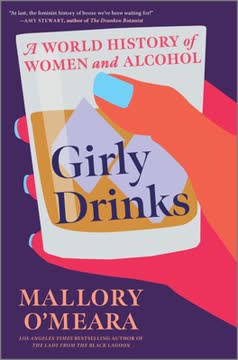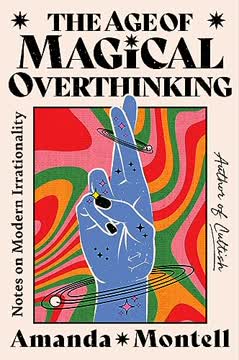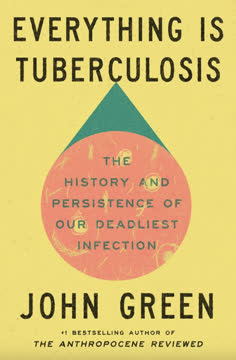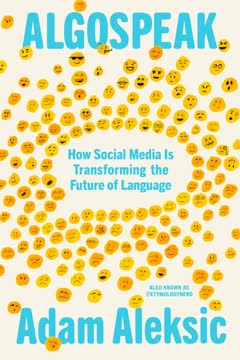Key Takeaways
1. Women Were the Original Brewers and Alcohol Discoverers
The truth is, all drinks are girly drinks.
Ancient origins. Human attraction to alcohol dates back millions of years to primate ancestors who evolved to metabolize fermented fruit. The earliest evidence of deliberate alcohol production, around 8000 BCE, shows women at the forefront. In ancient Mesopotamia, women controlled beer production and distribution, with the goddess Ninkasi revered as the deity of brewing.
- Venus of Laussel: 25,000-year-old carving of a woman holding a drinking horn.
- Ninkasi: Sumerian goddess of beer, whose hymn was a detailed brewing guide.
- Hathor: Egyptian "drunken goddess" celebrated with festivals.
Cultural cornerstone. In early civilizations like Sumer and Egypt, beer was a dietary staple for everyone, including children, due to unsafe water. Women brewed on a massive scale, and priestesses often led these operations, sometimes paid in beer. This era saw women as central to alcohol's role in daily life, religion, and economy, reflecting a period of greater gender equality.
Foundational influence. Women's hands laid the groundwork for alcohol craft and culture. From the first artistic depictions of drinking to the earliest alcohol-related deities, female influence was paramount. This foundational role highlights that women were not just consumers but essential creators and innovators in the world of booze.
2. Patriarchy Systematically Erased Women from Alcohol History
If you want to know how a society treats its women, all you have to do is look into the bottom of a glass.
Hammurabi's blow. The Code of Hammurabi (c. 1754 BCE) marked a devastating turning point, establishing patriarchy and stripping Mesopotamian women of rights. It forbade priestesses from taverns, making a drinking woman a "bad woman" and seizing the brewing industry from female control. This was the genesis of gendering alcohol.
Greek and Roman suppression. Ancient Greece, despite its powerful goddesses, severely restricted women's public life and drinking, fearing uninhibited women as threats to male property and social order. Rome adopted these misogynistic views, initially making female drinking illegal and punishable by death, later allowing only diluted, sweet "passum" for women in social settings.
- Pandora's jar: Misinterpreted as a box, originally a metaphor for a woman's womb unleashing evil.
- Symposiums/Conviviums: Male-only drinking rituals, women only as servers or entertainers.
Cleopatra's defiance. Cleopatra, a powerful Egyptian queen, openly drank and wielded political power, challenging Roman ideals of female subservience. Roman leaders launched a smear campaign, portraying her as a "lustful, wild, and drunken" seductress to undermine her authority, demonstrating how female power and drinking were intertwined targets of patriarchal fear.
3. From Alewives to Witches: The Demonization of Female Brewers
If a venture prospers, women fade from the scene.
Alewives' rise and fall. In the Early Middle Ages, alewives (brewsters) dominated brewing across Europe, turning their homes into alehouses and providing a vital source of income and independence for women of all classes. This unregulated trade allowed women to thrive economically. However, as hops revolutionized beer production, making it more profitable and exportable, men began to commercialize the industry.
Witchcraft accusations. The Church, seeing alehouses as rivals for Sunday attendance, demonized alewives. Their distinctive hats, cauldrons, and cats, once symbols of their trade, were twisted into imagery of witches. Women who brewed or sold alcohol were depicted as temptresses, disobedient, and even supernatural, fostering male suspicion and fear of their economic autonomy.
- Alewife imagery: Tall hats, cauldrons, cats – became witch stereotypes.
- "The tavern was the devil's schoolhouse": Alewives as "devil's schoolteachers."
- Fines for "untested" ale: Often targeted poor women.
Global parallels. Similar patterns emerged elsewhere. In Japan, women were gradually pushed out of sake brewing due to misogynistic superstitions. In Scotland, laws restricted women's brewing, forcing them into subterfuge. This global trend illustrates how economic prosperity in alcohol industries often led to the marginalization and demonization of the women who built them.
4. Distillation Empowered Women, Sparked New Industries
Alcohol has a lower boiling point than water, 78.37 degrees Celsius versus 100. So when you boil something like wine or beer, the alcohol vaporizes and rises first.
Maria's invention. The invention of the alembic still by Maria the Jewess (c. 100-200 CE) for alchemical pursuits inadvertently led to the discovery of distilled spirits. By the 1400s, this technology spread, transforming fermented beverages into potent "aqua vitae" (water of life), initially sold for medicinal purposes.
Women as early distillers. As distillation caught on, women quickly adopted the craft, especially in colder climates unsuitable for grape growing. In 16th-century Germany and England, women produced most spirits from their kitchens, filling the economic void left by the decline of alewives. Russia saw vodka become a staple, with women drinking and distilling alongside men.
- Half of Munich's distillers in 1564 were women.
- Russian women: Drank vodka earnestly, even sang about its glory.
New dangers, new opportunities. While distillation offered economic independence, it also brought new risks. Female distillers, like their brewing predecessors, faced accusations of witchcraft, reflecting patriarchal anxieties about women's power and knowledge. However, the ease of home distillation allowed women to maintain a significant, albeit often illicit, role in the burgeoning spirits market.
5. The "Girly Drink" Emerged as a Tool of Control
Creating a distinction between manly drinks and girly drinks was (and is) about control.
Roman origins. The concept of a "girly drink" dates back to ancient Rome, where women allowed into conviviums were relegated to drinking "passum," a sweeter, lower-alcohol raisin wine, while men consumed undiluted wine. This gendering of drinks served to maintain male dominance in social spaces.
Post-Prohibition gendering. After American Prohibition, when women gained access to public bars, men shifted their control from space to beverage. Austere martinis and highballs became "men's drinks," while sweet, brightly colored cocktails like gin fizzes were labeled "girly drinks," despite women often preferring stronger, less sweet options like the Old-Fashioned.
- Women preferred Old-Fashioneds and whiskey sodas post-Prohibition.
- "Girly drinks" were often defined by sugar content, bright color, and garnishes.
Modern manifestations. This trope persists today, with products like "Skinnygirl" cocktails and "wine mom" culture. These trends, while seemingly empowering, often reinforce diet culture and perpetuate stereotypes about women's drinking habits, or are used to mock women for enjoying alcohol. The underlying message remains: women's drinking, if not controlled or ridiculed, is a threat to established norms.
6. Women's Drinking Culture Flourished in Private Spaces
The only place a woman controlled was her kitchen. So while women were banned from public drinking, they still had a drinking culture. It was a private one, but it was robust.
Home as sanctuary. As women were pushed out of public taverns in Europe and colonial America, their drinking culture retreated into the home. Kitchens became vital social hubs where women gathered to drink beer, cider, or spirits, fostering friendships, sharing knowledge, and gossiping. This private sphere was a space of autonomy and community.
- "Mother's caudle": Warm wine/beer for birthing women and attendees.
- "Bride-ale": Fundraiser parties for newlyweds, where the bride brewed ale.
- Colonial cookbooks: Contained recipes for beers, ciders, and cordials, passed down through generations.
Illicit home production. In many cultures, women continued to brew and distill illegally at home to avoid taxes or bans, turning surplus grains into income. From Vietnamese rượu to Irish poitin and Russian samogon, home production provided economic security and a means of cultural preservation.
- Vietnamese women: Distilled rượu, often infused with botanicals, sold from homes.
- Irish women: Made poitin (moonshine), like legendary Kate Kearney during the famine.
- Russian women: Made samogon, sold covertly in factories and markets.
Resilience and community. Despite societal pressures and legal restrictions, women consistently found ways to make and consume alcohol. These private drinking rituals and illicit enterprises were not just about sustenance or income; they were acts of resilience, community building, and quiet defiance against patriarchal control.
7. Prohibition: Women's Fight for Both Sides of the Bottle
Prohibition ended up being one of the best things for drinking women in America because it turned the gendered rules of alcohol upside down and brought everyone to where women drank.
The Great Experiment. American Prohibition (1920-1933) banned the sale, import, transport, and manufacture of alcohol, but not its consumption. This forced all drinking underground, inadvertently dismantling centuries of male-dominated public drinking spaces and bringing everyone into the private sphere where women had long reigned.
Speakeasies and flappers. Speakeasies, illegal drinking establishments, became the first public spaces to actively welcome and cater to women. This new environment fostered a scandalous openness about female desire and sexuality, epitomized by the "flapper" – young women who drank, smoked, and defied social norms.
- Texas Guinan: Famous speakeasy hostess, welcomed celebrities and mobsters.
- A'Lelia Walker: Harlem Renaissance leader, hosted gay/lesbian-friendly club.
- Bessie Smith: Empress of the Blues, sang about women's freedom to drink and express sexuality.
Female bootleggers and repeal. Women became master smugglers and moonshiners, often outnumbering men due to legal loopholes (male agents couldn't search women). Gertrude "Cleo" Lythgoe, the "Queen of the Bootleggers," built an international whiskey empire. Simultaneously, Pauline Sabin's Women's Organization for National Prohibition Repeal (WONPR) successfully mobilized millions of women to fight for repeal, challenging the notion that all women supported temperance.
- Cleo Lythgoe: Smuggled high-quality whiskey from the Bahamas, became a media darling.
- Pauline Sabin: Founded WONPR, used social lobbying and political savvy to end Prohibition.
8. The Barstool Battle: Feminism's Fight for Public Drinking
DeCrow thought it was crucial for women to be able to leave the home and hang out in the public sphere, where important networking and business meetings happened.
Post-WWII discrimination. Despite women's contributions as bartenders during WWII, they were expected to return home. Many states maintained laws prohibiting women from bartending or even entering bars without a male escort, justified by fears of "B-girls" (women paid to encourage men to drink).
Second-wave activism. The 1960s and 70s saw feminists, led by figures like Karen DeCrow of NOW, challenge these discriminatory practices. They organized "drink-ins" at men-only bars, including McSorley's, to fight for women's right to public drinking spaces.
- Karen DeCrow: Led NOW's fight against gender discrimination in bars.
- "Drink-ins": Protests at men-only bars across the US.
- Ruth Bader Ginsburg: Successfully argued against discriminatory drinking age laws.
New spaces for women. These efforts led to legal changes, opening bars to women. This spurred the rise of "singles bars," "ladies' nights" (though often commodifying women), and "fern bars" – spaces designed to attract female customers with softer aesthetics. Lesbian bars, though often Mafia-owned for protection, provided vital community hubs for LGBTQ+ women.
- Ladies' night: Offered free/cheap drinks to women to attract men.
- Fern bars: Cozy, plant-filled spaces designed to appeal to women.
- Lesbian bars: Crucial community spaces, despite facing police harassment and internal discrimination.
9. Women Revolutionized Modern Alcohol Industries and Marketing
Joy Spence made history at Appleton Estate and opened doors for women at distilleries all over the world.
Breaking the glass ceiling. The late 20th century saw women finally break into leadership roles in the alcohol industry. Joy Spence became the world's first female master blender (rum) at Appleton Estate in Jamaica, followed by Rachel Barrie (scotch) and Helen Mulholland (Irish whiskey). In the US, women like Marge Samuels (Maker's Mark) revolutionized bourbon bottling, and Patricia Henry and Jill Vaugh became the first female brewmasters for major American breweries.
- Joy Spence: Queen of Rum, developed Appleton Estate's 250th Anniversary Blend.
- Marge Samuels: Created Maker's Mark iconic red wax seal, first woman in KY Bourbon Hall of Fame.
- Rachel Barrie: Scotland's first female master blender, developed award-winning Ardbeg Supernova.
Cocktail renaissance. Julie Reiner, a protégé of Dale DeGroff, became a driving force in the modern craft cocktail renaissance, opening influential bars like Flatiron Lounge and Clover Club. She championed fresh ingredients, accessible menus, and mentored a new generation of female bartenders.
- Julie Reiner: Opened NYC's first high-volume craft cocktail bar, mentored many female bartenders.
- Audrey Saunders: Opened Pegu Club, advocated for gin, created modern classic cocktails.
- Speed Rack: All-female bartending competition founded by Julie's mentees, Ivy Mix and Lynnette Marrero.
Marketing to women. While the "cosmo" became a "girly drink" icon thanks to "Sex and the City," and "wine mom" culture emerged on social media, women like Bethenny Frankel (Skinnygirl) capitalized on female-focused marketing. Dr. Ann Noble revolutionized wine tasting with her Aroma Wheel, making wine accessible beyond vague, gendered descriptors.
10. The Ongoing Fight for Inclusivity and Recognition
Our struggles today are paving a path for the next generation of women in our workspace, so they do not have to go through what we went or are going through.
Persistent challenges. Despite significant progress, women still face discrimination and underrepresentation in the alcohol industry. The "girly drink" stereotype persists, and women's contributions are often overlooked or devalued. The "Watch Your Drink!" campaign, while necessary, shifted responsibility for safety onto women rather than addressing predatory behavior.
New waves of activism. Women continue to organize and advocate for change. Apiwe Nxusani-Mawela, South Africa's first Black woman microbrewery founder, champions traditional African brewing and empowers other female brewers. Organizations like Women of the Vine and Spirits, The Hue Society, and Black Wine Professionals work to promote diversity and equity across the industry.
- Apiwe Nxusani-Mawela: Founded Brewster's Craft, celebrating African female brewers.
- Fawn Weaver: First Black woman to own a major liquor brand (Uncle Nearest).
- Harmony Moon Colangelo: First trans woman to write a cocktail book ("A Year of Queer Cocktails").
Redefining spaces. Initiatives like Doom Tiki challenge cultural appropriation in bars, while the Lesbian Bar Project fights to preserve vital LGBTQ+ spaces. These efforts highlight that bars are not just for drinking, but crucial for community, networking, and social change.
A resilient legacy. From ancient priestesses to modern master blenders, women have consistently shaped alcohol culture. Their resilience in the face of millennia of oppression ensures that, whatever the future holds, women will continue to innovate, lead, and enjoy their rightful place in every aspect of the drinking world.
Last updated:
Review Summary
Girly Drinks receives mostly positive reviews for its engaging exploration of women's role in alcohol history. Readers appreciate the author's casual, humorous tone and extensive research, highlighting lesser-known female figures. Some criticize the writing style as too informal and the organization as disjointed. Many find the book informative and eye-opening, praising its global perspective and feminist approach. Critics note occasional factual errors and superficial treatment of some topics. Overall, readers recommend it for those interested in women's history and alcohol culture.
Similar Books
Download PDF
Download EPUB
.epub digital book format is ideal for reading ebooks on phones, tablets, and e-readers.









